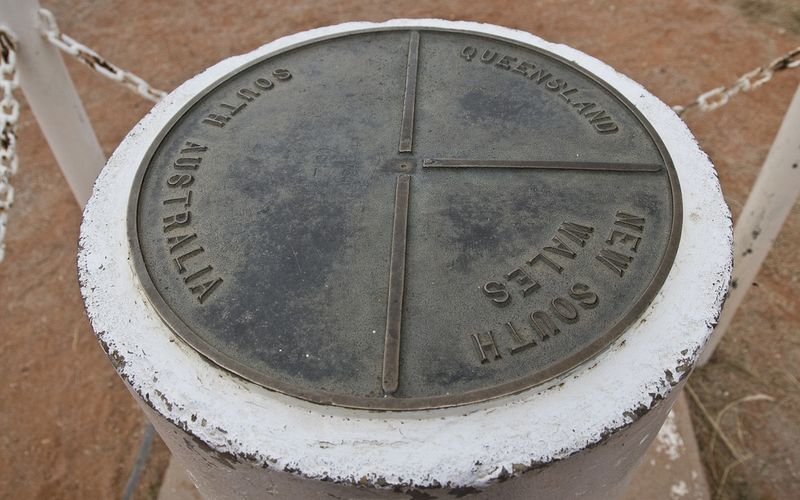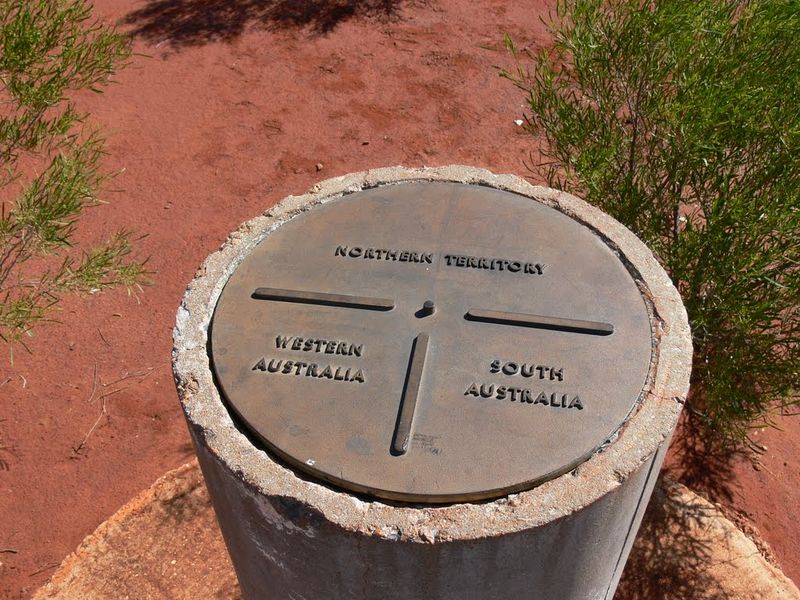When Italian mathematician Quirico Filopanti first sounded the idea of time zones in his book Miranda! published in 1858, he proposed that the world be divided longitudinally into 24 equal time zones, where each zone differs from the last by one hour. But the real world is rarely that simple. Influenced by political, geographical and social changes, the world adopted a much more complicated system where time zones differed by three-quarter, half and even quarter of an hour. Today there are as many as 40 different time zones.
With so many different time zones around it’s imperative that some of them would meet at more than one point. There are exactly twenty-two places, according to various sources, where more than three time zones meet. Some of them are obvious, such as tri-point boundaries between nations observing different time zones. The strangest ones are located in Australia because the way the country’s different states follow time.

The time zones of Australia and the three state corners where three time zones meet.
Australia has three time zones, but from spring until autumn when New South Wales and South Australia adjust their clocks for daylight-savings, two additional time zones appear that horizontally break up the country’s two easternmost time zones into four. These time zones, which differ from each other by 30-minutes, meet at three different places. The most popular of them is Cameron Corner in the outback of eastern Australia, where the boundaries of states of Queensland, South Australia, and New South Wales meet. The other ones are Poeppel Corner (located at the corner of Queensland, South Australia and the Northern Territory) and Surveyor Generals Corner (located at the corner of South Australia, Western Australia and the Northern Territory). Standing at any one these locations allows any person to be at three different points of time at the same time. To take advantage of this anomaly, more than a thousand people descended on the tiny settlement of Cameron Corner on December 31, 1999, so they could celebrate the arrival of the new millennium three separate times.
Also see: Kiribati, The First Place to Celebrate New Year's Eve

Marker at Cameron Corner. Photo credit: Kris H/Flickr

Marker at Cameron Corner. Photo credit: Geoffrey Rhodes/Flickr

Marker at Poeppel Corner. Photo credit: Mark161/Panoramio

Marker at Surveyor Generals Corner. Photo credit: jeza1/Panoramio
Another interesting place where a bunch of time zones meet is Antarctica. Being located on the South Pole, where every line of longitude meet, you might be tempted to think that all time zones meet here, but this is not the case, as time zones rarely adhere to geographical divisions. Because of the extreme day-night cycles near the times of the June and December solstices in Antarctica it is difficult to determine which time zone would be appropriate. Instead, researchers working on various stations in the Antarctic Circle observe time zones of the country the station is owned by, or the time zone of their supply base. For example, McMurdo Station and Amundsen–Scott South Pole Station use New Zealand time due to their main supply base being Christchurch, New Zealand. Many areas —those labeled in red in the map below— have no time zone at all, and follow Universal Time, by default.

Photo credit: Phoenix B 1of3/Wikimedia
Sources: CN Traveler / iO9



It's a shame you didn't explain why the Surveyor Generals Corner plaque appears to be in error but is actually correct. After all, West Australia has a north-south eastern border, with the Northern Territories on the north end of the other side of that border, and South Australia on the south end of the other side of the border. But the plaque shows the Northern Territories to the north of both Western Australia and South Australia. This is because the north-south border "line" actually has a jog in it 127.4 meters wide where the line jumps that far to the east.
ReplyDeleteIt took a long time to survey this north south line, and by the time they got to the agreed border between NT and SA at 26 degrees south latitude, they realized they were off a bit, as surveying had improved over those years. And property boundaries had been established at the north end of the line, so it couldn't be moved. So they did the practical thing, and shifted the southern part of the line over a bit.
See page 14 of
https://web.archive.org/web/20171118053358/https://www.xnatmap.org/adnm/docs/1genmap/sgcnr/1porter.pdf